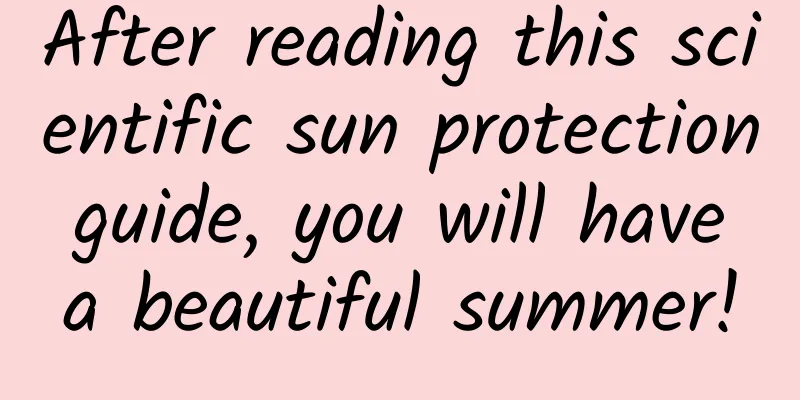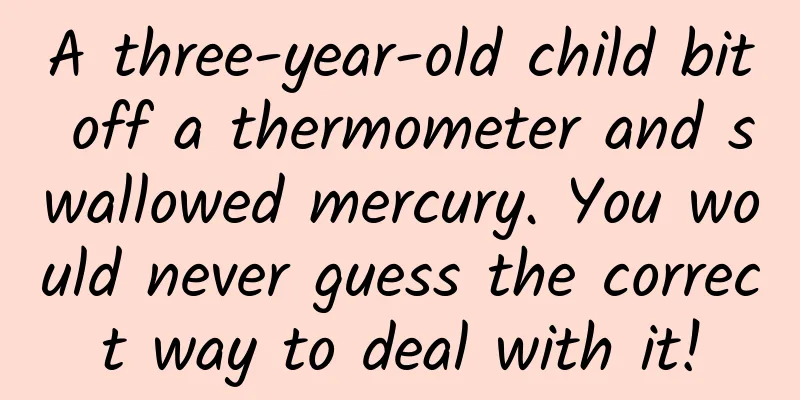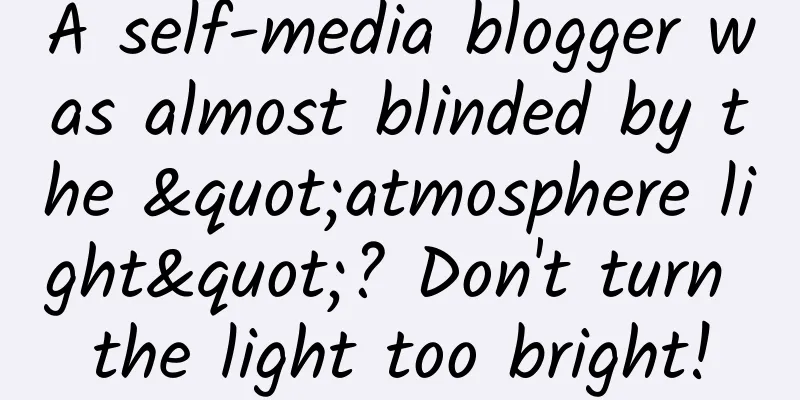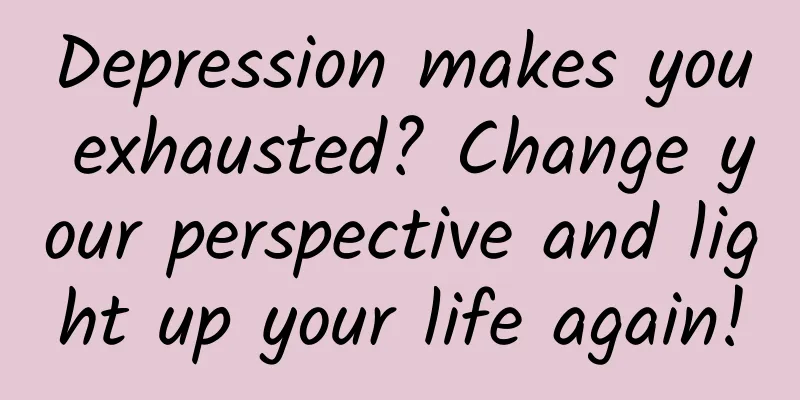After reading this scientific sun protection guide, you will have a beautiful summer!

|
This summer, the scorching sun and high temperatures came unexpectedly. When walking on the street, many people wore sun-protective clothing, sun hats, parasols, and sunglasses. Sun protection is an unavoidable topic in summer. In fact, excessive exposure to the sun will not only cause tanning and sunburn, but also cause skin aging and the formation of sun spots. In the process of skin aging, photoaging is the most important cause of skin aging. So, should we choose physical sunscreen or chemical sunscreen? Is hard sunscreen really necessary? How can we get back to white skin after getting tanned? How to choose sun-protective clothing? In response to these questions, we interviewed Wang Yunong, chief physician of the Department of Dermatology at the Third Affiliated Hospital of Beijing University of Chinese Medicine, to answer the above questions. 1. Physical sunscreen and chemical sunscreen Which one works better? Sun protection refers to protection against ultraviolet rays, which are also called UV. UV is divided into UVA, UVB and UVC. Usually UVC can be blocked by the ozone layer, so we need to protect against UVA and UVB. Sunscreen is divided into physical sunscreen and chemical sunscreen. Physical sunscreen generally refers to purely physical sunscreen preparations, which are composed of flaky atomic particles that block ultraviolet rays and reflect and scatter them, thereby achieving a sunscreen effect. The main ingredients of physical sunscreens are mostly titanium dioxide, zinc oxide, and magnesium oxide. The advantages are that the ingredients are mild, do not irritate the skin, and are not prone to allergies. They are suitable for people with sensitive skin, dry skin, children, and pregnant women. However, physical sunscreens are relatively thick and white in texture. They are unnatural after application and often require makeup remover to remove. Chemical sunscreens use translucent chemical ingredients to absorb ultraviolet rays, convert them into heat and dissipate them to reduce damage to the skin. Chemical sunscreens can absorb both UVB and UVA. The main ingredients are acetylbenzoic acid, salicylic acid or cinnamic acid. The advantage is that the texture is relatively light, the color is natural and non-greasy, and it is suitable for oily skin and acne-prone skin. Whether it is physical sunscreen or chemical sunscreen, as long as the SPF value reaches a certain level, theoretically, the sunscreen effect is the same. So you should choose according to your skin type. 2. How to choose sunscreen? Can children apply it? When choosing sunscreen, look at two indicators: SPF value and PA value. SPF value is the ability to protect against UVB, in simple terms, it prevents sunburn. SPF value is the ratio of how long it takes to get sunburned after applying sunscreen to how long it takes to get sunburned without applying sunscreen. The higher the SPF value, the better. Although the sunscreen effect lasts longer, it will also cause stronger irritation to the skin, which is more likely to breed acne and clog pores. We should choose the SPF value of sunscreen according to the season, region, and sunlight environment. In the morning and evening of spring, autumn, and winter, when the ultraviolet rays are relatively weak, it is sufficient to use an SPF value of 20. In the noon of spring and autumn, and in the morning and evening of spring and summer, or when the sunlight conditions are moderate, choose a sunscreen with an SPF value of 30. In the summer, when you are outdoors for a long time at noon, or at the seaside, snow, or plateau areas, when the ultraviolet rays are relatively strong, you should choose a sunscreen with an SPF value of 50. PA value refers to the ability to block UVA, or simply put, the ability to prevent photoaging. PA value is the ratio between the minimum sustained pigmentation after applying sunscreen and the minimum sustained pigmentation without applying sunscreen. It is generally divided into 3 ratios. PA products with one plus sign have twice the effect of blocking UVA compared to no application, products with two plus signs have four times the effect, and products with three plus signs have eight times the effect. It is recommended to choose sunscreen products with a higher PA value, that is, 3 plus signs, because UVA has stronger penetrating power than UVB and causes greater cumulative damage. If you are worried that applying sunscreen every day will cause damage to your skin, you can choose a safe, medical sunscreen. If the skin around your eyes does not feel irritated, red or itchy after applying it, it means that this sunscreen is safe. Sensitive skin has a relatively lower ability to resist ultraviolet rays and is more susceptible to sunburn. Try to choose physical sunscreens, which are relatively mild, do not add pigments, fragrances and other chemical agents, and will not cause chemical reactions to irritate the skin. Many medical experimental data have proved that physical sunscreens do not have some allergens, are non-toxic, and weakly acidic. It is not recommended for children to use sunscreen too early. Primary and secondary school students need to spend a certain amount of time outdoors every day to absorb enough calcium, which is beneficial to bone growth. Unless they are doing outdoor sports that expose them to the sun for a long time, they do not need to apply sunscreen when they are outdoors for a short period of time or when they go out. 3. Can you get white again after getting tanned? How to repair sunburn? People with fair skin are more likely to get sunburned, while people with dark skin are more likely to get tanned. If you have already been tanned, there is actually no way to recover quickly. The metabolism of melanin in the skin takes at least a month, and it will gradually lighten in about a month. If you want to get better quickly, you need to go to a regular hospital for diagnosis and treatment. Doctors usually use fruit acid peeling to accelerate the metabolism of melanin particles, but there is a certain risk of re-darkening, and your skin may become darker than before, so it is recommended to wait for the skin to repair itself on the basis of prevention. If the skin becomes red, swollen, painful, or itchy after sun exposure, it means that you have been sunburned and need to be repaired after sun exposure. If it is a mild to moderate sunburn with only redness and mild itching, you can first use a small fan to cool the skin, then spray it with cold water, or use a medical cold compress to calm the skin and relieve the dilation of the skin's capillaries. Then apply some thick hyaluronic acid dressings or a moisturizing lotion with streamlined ingredients, and stop using irritating skin care products, such as acid and a-alcohol skin care products. If the skin itches and hurts severely, or even peels and blisters appear, it is a severe sunburn and you need to go to the dermatology department of the hospital. Under the guidance of the doctor, you can apply some medicines, including boric acid lotion or traditional Chinese medicines that clear away heat and detoxify, such as purslane, honeysuckle, and dandelion. 4. What is drug photosensitivity reaction? Which medicines should I pay attention to sun protection after taking? Drug photosensitivity reaction refers to some adverse reactions caused by exposure to sunlight after taking or applying certain drugs topically. Drugs that can cause photosensitivity reactions are called photosensitivity drugs. According to different mechanisms of occurrence, they can be divided into phototoxic reactions and photoallergic reactions. The most common reaction is phototoxicity, which often occurs in exposed areas such as the face, neck, and limbs. Symptoms include redness, swelling, stinging, itching, blisters and other reactions similar to sunburn. Photoallergy refers to a photosensitivity reaction to a drug that occurs in an area that is not exposed to light. It has a low incidence rate, is more likely to occur in people with allergic constitutions, and will only occur after a long period of medication. Photosensitizing drugs include several categories, the most common of which are antibiotics, such as quinolones, which are commonly known as floxacins, and other antibiotics include tetracyclines and sulfonamides. The second category is antipyretic, analgesic, and anti-inflammatory drugs, such as ibuprofen, naproxen, etc., diuretics such as hydrochlorothiazide, and some antihypertensive drugs such as Beijing Antihypertensive No. 0 and Zhenju Antihypertensive Tablets. Finally, some antifungal and anti-tumor drugs may also cause photosensitivity reactions. During the period of taking the drug and within five days after taking the drug, you should try to avoid strong light exposure, and it is best to take the drug at night. In addition, during this period, it is best to eat less foods rich in photosensitive substances, such as celery, rapeseed, coriander, lemon, etc. 5. Does UV test paper have any scientific basis? Can it be used as a reference for purchasing sun-protective clothing? UV test cards, that is, UV test paper and UV lamps, are not IQ taxes. There is a photosensitive organic substance in the UV test card. After absorbing ultraviolet light, its structure will change, and the absorption spectrum will also change, so it will change color. However, the test card cannot reflect the sun protection effect after long-term sun exposure, but is used to show the strength of ultraviolet rays at the moment. If you shine a UV lamp through the sun protection clothing to shine on the UV card, the color will not change, which only means that it has the effect of blocking ultraviolet rays at the moment. When choosing sun protection clothing, you need to look at the UV protection performance standards and sun protection logo on the tag. Generally speaking, UV protection clothing can only be called sun protection clothing if the UPF value is above 40 or the UVA transmittance is less than 5%. If you are outdoors for a long time, choose a UPF value greater than 50. In addition, polyester or nylon fabrics have better sun protection and breathability. END |
<<: Science illustration | Reaching the moon in the sky, putting Chinese footprints on the moon
Recommend
iOS 15.2 new feature: can display accessory replacement status
In the early morning of the 14th, Apple officiall...
Suddenly found yourself with bloating and a thick waist? It may be this disease, be alert!
Ms. Wang, 52, suddenly found that her waistline h...
Cultural Relics + 928 Sets! World-class Major Archaeological Discovery →
About 150 kilometers southeast of Sanya City, Hai...
Which company providing SEO optimization services in Wuwei is better? How to choose?
Nowadays, due to the increasing bidding costs, ma...
How much does it cost to join the Wuhai food delivery app? What is the price for joining the Wuhai food delivery app?
Is it easy to join the Wuhai food delivery mini p...
How to move a sofa around a corridor? This is a problem that has puzzled mathematicians for more than 60 years.
It is probably too early to assert that the "...
Tik Tok promotion strategy, how to come up with a Tik Tok title?
Tik Tok is a popular product. Many individuals, t...
The first developer preview of Android 14
Making Android work well for each of the billions...
The phone freezes suddenly, and the screen doesn't respond when you click it. Here's a way to force restart the phone.
Many friends encounter the problem of their phone...
Do you remember the "fish astronauts" who "took" the Shenzhou 18 to space? They are expected to "go on a business trip" to space again this year
Do you remember the four zebrafish that "rid...
The promotion has no effect and there are malicious clicks. How to solve it?
Recently I heard a lot of people talking about pr...
How to mine long-tail keywords? Fifteen methods for mining long-tail keywords
Introduction: I have been engaged in SEO website ...
Case Analysis|Review of Himalaya FM's "66 Membership Day" event
1. Activity Background 1. Market conditions Pay a...
Is the LG G3's camera IMX 214?
Which sensor does the LG G3 camera use? Is it IMX ...
This is the real value of the mini program, but it will never replace the App
WeChat Mini Programs have been launched for some ...





![Chun Ge, the painter, introduces the human body painting in 2021 [good quality and material]](/upload/images/67cc026c499d0.webp)



